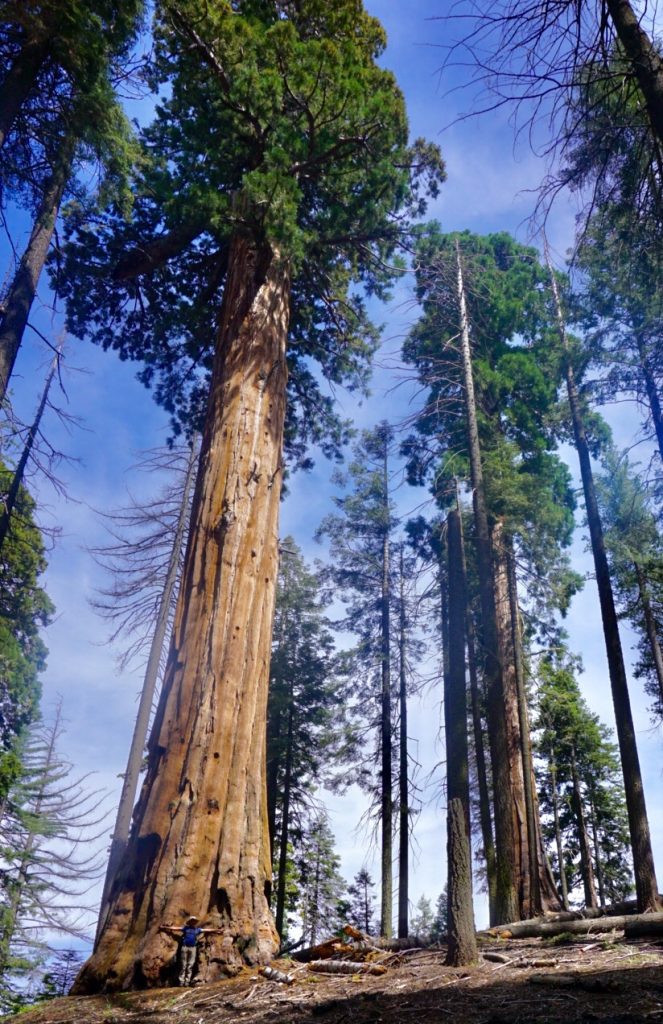Hiking lets you see three of nature’s wonders: water (sea, river, snow), mountains, and trees. If I had to pick one to hike amongst, it would be trees. I find them magical. I talk to them. And, yes, I hug them too!
I feel trees are our companions. When I pass a tree I’ve known for many years, I think that tree has seen me for many years too. And in some cases it will be there long after I’m gone.
Imagine my wonder and delight when we went to Kings Canyon and Sequoia National Parks in California’s Sierra Nevada mountains. There were trees that were nearly 3000 years old! To think these trees were seeds once before nature worked its magic.
Sequoia trees have a soft fibrous bark. They’re gentle giants. For them to flourish, there must be fire, somewhat counter-intuitively. The fire clears the ground, clears the skyline to let in more light, and leaves behind ash to make the ground more fertile for seeds to germinate. This was discovered, we were told by the engaging park ranger, when someone wondered why there were no new sequoia trees after forest fires began to be stopped. His controlled forest fire experiments (“you’d like to do what?!) changed the way foresters thought about fires.
Sequoias have a rare combination of traits: they grow fast and live long. The ones we saw were larger and older than most trees on Earth. They have a few advantages to help them grow big and old. Tannins in the bark and wood resist disease, rot and insects. The thick bark provides superior insulation against fire. With little flammable sap, it doesn’t burn easily. Finally the extensive roots reach far for water.
Some of the old, large sequoia trees have a dead top (“snag top”). This doesn’t mean that they are dying. The fire scars at the base of the tree prevent water and nutrients from reaching the tip of the trunk.
The age of a living sequoia tree is estimated using the outer rings then adjusted based on old stumps. It’s been estimated that trees in the area are between 1800 and 3000 years old!
The General Grant Tree we saw is a giant tree – a monarch. Only excellent sequoia habitat allow it to reach its tremendous size: 82m tall and 12m wide – and it’s only about 1700 years of age. The tree was named after Civil War General Ulysses S Grant.
We also visited the largest tree on Earth – the General Sherman tree. Its claim to fame comes from the volume of its trunk. A few other tree trunks have a greater circumference. Some trees are taller. But no other tree has more wood in its trunk than the Sherman tree. Its top is dead. So the tree’s trunk no longer gets taller. However, its volume keeps increasing. Each year the trunk grows wider, adding enough wood to equal another good-sized tree. It’s current girth on the ground is 33m. The girth is uneven because of natural growth and fire scars.
Of one of the groves we visited, John Muir, the Scottish-American naturalist, described entering it in 1873:
A magnificent growth of giants…one naturally walked softly and awe-stricken among them. I wandered on, meeting nobler trees where all are noble… this part of the Sequoia belt seemed to me the finest, and I then named it ‘the Giant Forest’.























One thought on “Walking amongst giants”